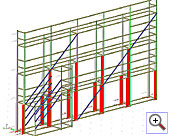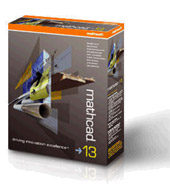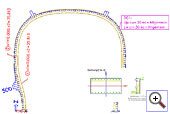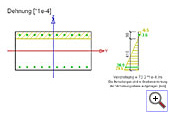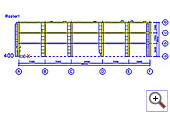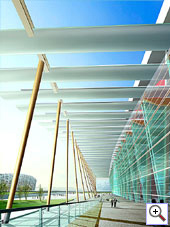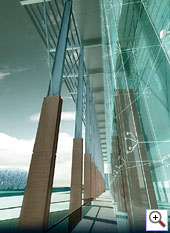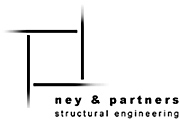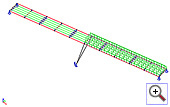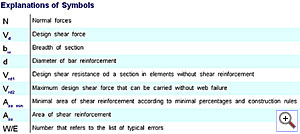| |
|
|
|
|
|
|
|
|
|
|
|
| |
|
|
|
Home | Company |
Solutions
| References
& Markets | News
& Events
|
Support
|
Contact |
|
| |
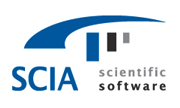 |
|
|
 |
|
|
NL
FR
EN
DE
CZ |
|
|
December 2005 |
|
|
| |
|
<printable version>
Dear eNews reader,
Before the start of the festive season, we would like to treat you to a captivating December edition of the SCIA eNews. In the first place we would like to thank you, our readers, for the many projects and articles, which have contributed to the enormous success of the eNews during the past year; in witness of this achievement are the almost 11,000 faithful readers and the many positive responses which we have received last year. We kindly invite you to continue sending your contributions, suggestions and observations in the next year.
Are you interested in having one of your projects and your company in our eNews and getting international attention? Don’t hesitate and contact or your regional contact person.
We wish you a lot of reading pleasure with the following subjects:
|
|
| |
|
|
|
| |
|
|
New advanced Design Techniques and finally … the Euro codes |
|
| |
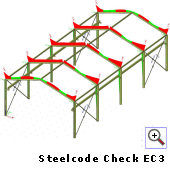 The European member states have finally decided to set a limit for having implemented the national documents of the 10 Euro codes: the year 2010. Most countries have decided to start the legal co-existence period on 1.1.2006. Today, many countries already accept the applicability of the Euro codes. We are definitely gaining momentum. The European member states have finally decided to set a limit for having implemented the national documents of the 10 Euro codes: the year 2010. Most countries have decided to start the legal co-existence period on 1.1.2006. Today, many countries already accept the applicability of the Euro codes. We are definitely gaining momentum.
SCIA is working hard to have the complete spectrum of all 10 Euro codes available in SCIA.ESA PT, addressing all materials (steel, concrete, composite, wood, aluminium, masonry, soil) and all impacts (statics, dynamics, fire, earthquake, …). SCIA has extensive experience with the Euro codes since parts of the early Euro code 3 were already implemented in 1979. Today we are implementing the highest functional level possible of the codes.
We bring into memory the 4 major reasons of having Euro codes:
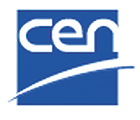
- unified design criteria in Europe
- harmonisation of local codes
- unified basis for research and further development of design techniques
- stimulus to exchange services and products in the construction industry
The world has lately been struck by many hazards: earthquakes, tornados, flood, fire … The tasks of design engineers are more stringent than ever: their job is to design economical yet safer structures.
The role of SCIA is to bring unique software, addressing a multitude of technical questions for a variety of structures. At the same time we want to help our customers implementing and using the latest codes.
|
|
 |
|
| |
Physical and geometrical non-linear analysis (PGNL) in SCIA.ESA PT 5.2 |
|
Calculation of reinforced concrete structures with real stiffnesses of cracked steel-concrete sections.
In the linear calculation of a reinforced concrete structure, the stiffness of the uncracked concrete sections is used. These SCIA.ESA PT modules offer the possibility to take the real stiffness of the reinforced concrete cross section into account, including cracking of the concrete and the presence of reinforcement.
The stiffness of the concrete-steel section is calculated per element for the actual internal forces. In this iterative analysis, second order effects (influence of the deformations on the internal forces) can be taken into account.
This calculation method has several practical applications, among them:
- Detailed calculation of column reinforcement
For simple calculations of reinforcement in columns, the "Model column" method is used. A detailed calculation requires the calculation of internal forces including 2nd order effects, and with the real stiffnesses of the reinforced concrete column.
- Redistribution of moments in beams
By the cracking of the section, the stiffness of a beam is reduced above the supports. The moment is redistributed to the field. The peaks in the moment line above supports are reduced.
|
|
| |
 |
|
| The market: Beijing (Peking), a thousand days away from its Olympic dream |
|
| |
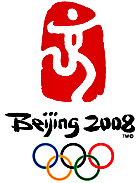  At only a thousand days away from the first Olympic Games of China, the Chinese government actively prepares what it hopes to be a real springboard for propelling China into the camp of the great modern powers. At only a thousand days away from the first Olympic Games of China, the Chinese government actively prepares what it hopes to be a real springboard for propelling China into the camp of the great modern powers.
The capital has already celebrated the symbolic date that separates it from the beginning of the games, August 8th 2008, by launching a national campaign of Olympic "education ", specially addressing the young people. The mascot of the games has also been revealed on that occasion.
The Chinese government is very anxious to use the Olympic Games for patriotic ends, they wish that the event will reflect the political and economic development of the country on the international scene. Between 25 and 35 billion dollars, according to semi-official estimates', will be invested in the infrastructure of Peking (airport, roads, subway, new residential districts, etc). Some 1,8 million jobs were or will be created, not only for these infrastructures but also for the sites such as the new Olympic stadium (386 million dollars) or the national aquatic centre.
The authorities deny to be wasting money. Whereas the plays of Athens have cost 2,4 billion dollars, the operational budget of Peking amounts to 1,61 billion dollars for awaited receipts of 1,625 billion dollars, according to Mr. Jiang. As well with regard to investments as to the organization, the IOC is optimistic. " We know that China is completely able to organize great sporting events ", the president of the ‘International Olympic Committee’ (IOC), Jacques Rogge, stated at the time of his last visit in the Chinese capital, in October.
 The preparations have been running so smoothly that the BOCOG had to slow down the Chinese efforts, at the request of the IOC. " At less than three years from the games, we look beyond the infrastructures and operational aspects and already imagine how the people in China and in the world will experience it all ", recently affirmed Hein Verbruggen, the " Mr Peking 2008 " of the IOC. The owner of the Chinese Communist Party (CCP) of Peking, Liu Qi, also president of the BOCOG, reaffirmed last week that all installations would be ready by the end of 2007 and announced the initialisation of ‘Olympic education’ courses in the schools. " The BOCOG will provide all schools, high schools, … of the country with documents ", declared Liu Qi, without revealing the contents of them. The preparations have been running so smoothly that the BOCOG had to slow down the Chinese efforts, at the request of the IOC. " At less than three years from the games, we look beyond the infrastructures and operational aspects and already imagine how the people in China and in the world will experience it all ", recently affirmed Hein Verbruggen, the " Mr Peking 2008 " of the IOC. The owner of the Chinese Communist Party (CCP) of Peking, Liu Qi, also president of the BOCOG, reaffirmed last week that all installations would be ready by the end of 2007 and announced the initialisation of ‘Olympic education’ courses in the schools. " The BOCOG will provide all schools, high schools, … of the country with documents ", declared Liu Qi, without revealing the contents of them.
|
|
| |
 |
|
| |
Customer project: International Conference Centre in Guangzhou (China) |
|
| |
Studies: 2005
Realization: 2005-2006
Architect: Buro II (Belgium) + Citic (China)
Building owner: Province of Guangdong (Southern China)
Stability: Ney & Partners (Belgium) + Citic (China)
Dimensions: 250 000 m2
Total budget: 2 000 000 000 RMB (that is 210 Millions €)
Type of work: Public work - Metal - Concrete
The Project
The new Conference Centre of the city of Guangzhou (China) is situated at the foot of the Baiyun mountain.
It includes five buildings, of which three conference centres with amphitheatres (1000 and 2500 seats), conference rooms, restaurants, ... and two hotels. These five buildings are connected to the natural reserve of Baiyun by "eco-bridges", they look as if 5 green fingers are bringing nature into the city, and vice versa.
Four of the five buildings are made out of reinforced concrete. The basic structural mesh measures 18m by 18m. The central building is made out of steel. With a length of 150m, breadth of 40m and height of 45m, it includes two overhangs of 24m. Consequently, two steel beam-lattices are used in the longitudinal direction for the realisation of floors, overhangs and the transmission of seismic forces towards the walls with wind bracing.
The "eco-bridges" are bridges with a length of 300 to 500m situated in-between the buildings, some of them are passing above Baiyun Avenue. These bridges are designed by architectural landscape designers, they are covered with soil and completed with planting in order to bring nature into the city.
The same concept was used for the other bridges: a concrete U-shaped section in the central part is thus making it possible to easily adapt the section to the necessary width.
The supports are circular steel columns filled with concrete and have a variable slope. The maximum range is 58m. Between the buildings, these bridges are supported for the whole 18m.
This project is the prizewinner of an international architecture contest.
Mission of the engineering and design office Ney & Partners (Brussels)
Consultant for the Preliminary Design.
The mission of the engineering and design office Ney & Partners Brussels, was to assist the architect in the design of the principal structures of the project, such as the structure of the central building (Main Entrance Building), the "eco-bridges", the footbridges for pedestrians, etc. SCIA.ESA PT has been used as computation software for the checking of all the different structures. In addition to the modelling functions by finite elements, allowing fast predimensioning of the above mentioned structures, the graphical capacities are extremely useful in order to give the architect and the owner of the building a realistic idea of the visual impact and the integration of the structural elements in the whole of the project.
|
|
|
|
|
|
|
|
| |
| |
 |
|
| |
Tips & Tricks: Concrete, explanation of symbols in SCIA.ESA PT 5.2 |
|
| |
When performing a design calculation for a concrete structure, SCIA.ESA PT allows the user to make a well-organised calculation note in the document.
To improve the calculation note even more, the user can choose to activate the option  in the Properties Window of the Design As table in the document. in the Properties Window of the Design As table in the document.
This way, an explanation is shown of the different symbols used:
This explanation provides a clear guide to anyone reading the document, especially when the reader is not the one who created the calculation model. |
|
| |
 |
|
| |
About
this SCIA eNews |
|
| |
| » |
We would like to encourage you to give us your current
e-mail address, if the one we used for this message, would not
be correct or if you want us to send it to another address. |
| » |
If you would like to
from this eNews, just send us an e-mail with
'unsubscribe' as the subject followed by the
e-mail address to be deleted. |
| » |
Please let us know if there are any topics in which you are
interested. We would also like to hear any suggestions or ideas
you may have on improving this eNews.
|
|
|
| |
 |
|
| |
|
|
| |
SCIA Group NV - Industrieweg 1007 - B-3540 Herk-de-Stad
Tel: +32 (13) 55.17.75 - Fax:+32
(13) 55.41.75 |
Copyright
© 2005 SCIA Group nv
|
|
| |
|
|
|
|
|


 The European member states have finally decided to set a limit for having implemented the national documents of the 10 Euro codes: the year 2010. Most countries have decided to start the legal co-existence period on 1.1.2006. Today, many countries already accept the applicability of the Euro codes. We are definitely gaining momentum.
The European member states have finally decided to set a limit for having implemented the national documents of the 10 Euro codes: the year 2010. Most countries have decided to start the legal co-existence period on 1.1.2006. Today, many countries already accept the applicability of the Euro codes. We are definitely gaining momentum.

 At only a thousand days away from the first Olympic Games of China, the Chinese government actively prepares what it hopes to be a real springboard for propelling China into the camp of the great modern powers.
At only a thousand days away from the first Olympic Games of China, the Chinese government actively prepares what it hopes to be a real springboard for propelling China into the camp of the great modern powers. The preparations have been running so smoothly that the BOCOG had to slow down the Chinese efforts, at the request of the IOC. " At less than three years from the games, we look beyond the infrastructures and operational aspects and already imagine how the people in China and in the world will experience it all ", recently affirmed Hein Verbruggen, the " Mr Peking 2008 " of the IOC. The owner of the Chinese Communist Party (CCP) of Peking, Liu Qi, also president of the BOCOG, reaffirmed last week that all installations would be ready by the end of 2007 and announced the initialisation of ‘Olympic education’ courses in the schools. " The BOCOG will provide all schools, high schools, … of the country with documents ", declared Liu Qi, without revealing the contents of them.
The preparations have been running so smoothly that the BOCOG had to slow down the Chinese efforts, at the request of the IOC. " At less than three years from the games, we look beyond the infrastructures and operational aspects and already imagine how the people in China and in the world will experience it all ", recently affirmed Hein Verbruggen, the " Mr Peking 2008 " of the IOC. The owner of the Chinese Communist Party (CCP) of Peking, Liu Qi, also president of the BOCOG, reaffirmed last week that all installations would be ready by the end of 2007 and announced the initialisation of ‘Olympic education’ courses in the schools. " The BOCOG will provide all schools, high schools, … of the country with documents ", declared Liu Qi, without revealing the contents of them.

